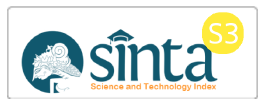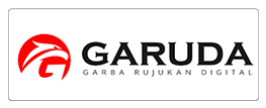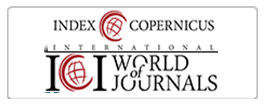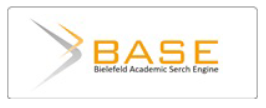The Effect Of Ownership Structure On The Performance Of Intellectual Capital
DOI:
https://doi.org/10.22219/jaa.v4i2.17897Keywords:
Foreign Ownership, Government Ownership, Intellectual Capital Performance, Institutional Ownership, Managerial OwnershipAbstract
This study aims to show empirical evidence of the effect of managerial ownership, institutional ownership, foreign ownership and government ownership on intellectual capital performance as the dependent variable. This study relates the influence between these variables by expanding the concept and understanding of Resource-Based Theory, Agency Theory and Stakeholder Theory. The sample in this study is the mining sector companies listed on the Indonesia Stock Exchange in 2016-2019 using purposive sampling technique, namely selecting samples with certain criteria to get more valid results. The data analysis technique used is the classical assumption test, then the results are analyzed using multiple regression analysis to prove the influence between variables by utilizing an accurate SPSS application. The results of this study indicate that institutional ownership and foreign ownership have a positive effect on intellectual capital performance in mining companies, while managerial ownership and government ownership do not show any effect on intellectual capital performance in mining companies in Indonesia. This research contributes to the theory and practice of companies in the conduct of business. However, this study has not been able to prove the influence of managerial and government ownership on intellectual capital performance, so that further research can consider other corporate sectors whose managerial and government ownership is quite dominant.
Downloads
References
Aisyah, C. N., & Sudarno. (2014). Pengaruh Struktur Kepemilikan Dan. Diponegoro Journal of Accounting, 3(2), 233–241. https://ejournal3.undip.ac.id/index.php/accounting/article/view/6062
Amit, R., & Schoemaker, P. J. H. (1993). Strategic Assets And Organizational Rent. Strategic Management Journal, 14(1), 33–46. https://doi.org/10.1002/smj.4250140105
Asfahani, E. S. (2007). Pengaruh Ukuran Perusahaan, Profitabilitas, Leverage, Umur Perusahaan dan Kepemilikan Pemerintah Terhadap Pengungkapan Intellectual Capital. Jurnal Ekonomi Akuntansi, 3(3), 40–61. http://fe.ubhara.ac.id/ojs/index.php/equity/article/view/511
Barney, J. (1991). Firm Resources And Sustained Competitive Advantage. Journal Of Management, 17, 99–120. https://doi.org/10.1177/014920639101700108
Barney, J. B. (2003). Unraveling The Resource-Based Tangle. Managerial And Decision Economics, 24(4), 309–323.
Barney, J. B., & Clark, D. N. (2007). Resource-Based View Theory: Creating And Sustaining Competitive Advantage. Oxford University Press Inc, New York, 4, 1–10.
Bathala, C. T., Moon, K. P., & Rao, R. P. (1994). Managerial Ownership, Debt Policy, and The Impact of Institutional Holdings: An Agency Perspective. Financial Management, 23(3), 38–50. https://doi.org/10.2307/3665620
Bohdannowicz, & Urbanek, G. (2013). The Impact of Ownership Structure on Intellectual Capital Efficiency: Evidence From Polish Emerging Market. https://doi.org/Bohdanowicz, Leszek and Urbanek, Grzegorz, The Impact of Ownership Structure on Intellectual Capital Efficiency: Evidence from Polish Emerging Market (December 27, 2013). Available at SSRN: https://ssrn.com/abstract=2372412 or http://dx.doi.org/10.2139/ssrn.2372412
Bohdanowicz, L. (2014). Managerial Ownership and Intellectual Capital Efficiency: Evidence From Poland. China-USA Business Review, 13(10), 626–635. https://doi.org/10.17265/1537-1514/2014.10.002
Chen, M., Cheng, S., & Hwang, Y. (2005). An Empirical Investigation of The Relationship Intellectual Capital and Firm’s Market Value and Financial Performance. Journal of Intellectual Capital, 6(2), 159–176. https://doi.org/10.1108/14691930510592771
Diah, & Emran. (2009). Kajian Riset Akuntansi. Gramedia Widiasasarana.
Dian, G. (2011). Pengaruh Struktur Kepemilikan, Ukuran Perusahaan, dan Umur Perusahaan Terhadap Kinerja Intellectual Capital (Studi Pada Perusahaan Perbankan yang Terdaftar di BEI tahun 2009-2009). In Tesis. Universitas Diponegoro Semarang.
Farooque, O. Al, Zijl, T. Van, Dunstan, K., & Karim, A. W. (2007). Corporate Governance in Bangladesh: Link between Ownership and Financial Performance, Blackwell Publishing Ltd 1453-1468. Journal Compilation, 15(6). https://doi.org/10.1111/j.1467-8683.2007.00657.x
Fitriyah, F. K. (2011). Pengaruh Kepemilikan Institusional , Set Kesempatan Investasi Dan Arus Kas Bebas. Media Riset Akuntansi, 1(1), 31–76. http://journal.bakrie.ac.id/index.php/journal_MRA/article/view/14/14
Ghozali, I. (2013). Aplikasi Analisis Multivariate Dengan Program IBM SPSS 21 Update PLS Regresi. Semarang: Universitas Diponegoro.
Guthrie, J. (2001). The Management, Measurement and The Reporting Intellectual Capital. Journal of Intellectual Capital, 2(1), 27–41. https://doi.org/10.1108/14691930110380473
Hunardy, N., & Tarigan, J. (2017). Pengaruh Kepemilikan Pemerintah Terhadap Kinerja Keuangan Melalui Dewan Komisaris Independen Sebagai Variabel Intervening. Business Accounting Review, 5(2), 602–604.
Indrianto, N., & Supomo, B. (2002). Metodologi Penelitian Bisnis. Yogyakarta: BPEE.
Ismiyanti, F., & Hamidya, A. R. (2017). Pengaruh Struktur Kepemilikan Terhadap Kinerja Dengan Value Added Intellectual Capital Coefficient (VAIC) Sebagai Variabel Intervening [The Influence of Ownership Structure on Performance with Value Added Intellectual Capital Coefficient (VAIC) as an Intervening Variable]. DeReMa (Development Research of Management): Jurnal Manajemen, 12(1), 40. https://doi.org/10.19166/derema.v12i1.340
Jensen, M. C., & Meckling, W. H. (1976). Theory of the Firm: Managerial Behavior, Agency Costs, and Ownership Structure. Journal of Financial Economics, 3(4), 305–360. https://doi.org/10.1016/0304-405X(76)90026-X
Kholmi, M., & Wahyuni, E. D. (2020). Analisis Praktik Pengungkapan Intellectual Capital Studi Pada Perusahaan Sub Sektor Industri Otomotif. Jurnal Akademi Akuntansi, 3(2), 191–199. https://doi.org/10.22219/jaa.v3i2.13227
Kozlenkova, I. V., Samaha, S. A., & Palmatier, R. W. (2014). Resource-Based Theory In Marketing. Journal Of The Academy Of Marketing Science, 42(1), 1–21. https://doi.org/10.1007/s11747-013-0336-7
Mahardika, E. S. S., Khafid, M., & Agustina, L. (2014). Pengaruh Struktur Kepemilikan, Ukuran Dan Umur Perusahaan Terhadap Kinerja Intellectual Capital. Accounting Analysis Journal, 3(2). https://doi.org/10.15294/aaj.v3i1.4192
Marcus, A., & Kane, A. (2006). Investemens, 6th Edition. Jakarta: Salemba Empat.
Nazari, J. A., & Herremans, I. M. (2007). Extended VAIC Model Measuring Intellectual Capital Components. Journal of Intellectual Capital, 8(4), 595–609. https://doi.org/10.1108/14691930710830774
Ningsih, D. M., Arza, F. I., & Afriyenti, M. (2017). Pengaruh Struktur Kepemilikan Manajerial, Profitabilitas dan Ukuran Perusahaan terhadap Kinerja Intellectual Capital (Studi Empiris Perusahaan Perbankan yang terdaftar di BEI Tahun 2012-2014). Jurnal Wahana Riset Akuntansi, 5(1), 1–28. https://doi.org/10.24036/wra.v5i1.8711
Pradita, I., & Solikhah, B. (2017). The Influence of Industry Type, Ownership Structure, Company Risk, and Intellectual Capital Efficiency on Intellectual Capital Performance. Accounting Analysis Journal, 6(2), 277–287. https://doi.org/10.15294/aaj.v6i2.13862
Pradono, N. S. H., & Widowati, E. H. (2016). Pengaruh Komisaris Asing, Direktur Asing Dan Kepemilikan Asing Terhadap Kinerja Intellectual Capital. Kinerja, 20(2), 132. https://doi.org/10.24002/kinerja.v20i2.840
Pratama, B. C. (2016). The Impact of Intellectual Capital of Indonesia’s High-Tech Company on Firm’s Financial and Market Performance. International Journal of Academic Research in Accounting, Finance and Management Sciences, 6(4), 73–81.
Pulic, A. (1999). Measuring The Performance Of Intellectual Potential In The Knowledge Economy.
Pulic, A. (2000). VAIC : An Accounting Tool For IC Management. International Journal Of Technology Management, 20(5/6/7/8), 702–714. https://doi.org/10.1504/IJTM.2000.002891
Putriani, F. D., & Purwanto, A. (2010). Pengaruh Struktur Kepemilikan, Tingkat Keuntungan Perusahaan, dan Risiko Perusahaan Terhadap Kinerja Intellectual Capital. Jurnal Akuntansi & Auditing, 3(1).
Sabrina, F. N., & Muharam, H. (2015). Analisis Pengaruh Kepemilikan Pemerintah, Kepemilikan Asing, Risiko Likuiditas dan Risiko Kredit Terhadap Kinerja Keuangan Bank. Diponegoro Journal of Management, 224–236.
Saleh, N. M., & Rahman, M. R. C. A. (2009). Ownership Structure and Intellectual Capital Performance In Malaysia. Asian Academy of Management Journal of Accounting and Finance, 5(1), 1–29. https://ssrn.com/abstract=1153908
Setianto, A. P., & Purwanto, A. (2014). Analisis Faktor-Faktor yang Mempengaruhi Pengungkapan Modal Intelektual (Studi Empiris pada Perusahaan yang Terdaftar di “Indeks Kompas 100” Tahun 2010-2012). Universitas Diponegoro Semarang.
Sofyaningsih, S., & Hardiningsih, P. (2011). Struktur Kepemilikan, Kebijakan Dividen, Kebijakan Utang Dan Nilai Perusahaan Ownership Structure Dividend Policy And Debt Policy and Firm Value. Jurnal Dinamika Keuangan Dan Perbankan, 3(1), 20. https://www.unisbank.ac.id/ojs/index.php/fe1/article/view/195
Supradnya, I. N. T., & Ulupui, I. G. K. A. (2016). Pengaruh Jenis Industri,. E-Jurnal Ekonomi Dan Bisnis Universitas Udayana, 5(5), 1385–1410. https://ojs.unud.ac.id/index.php/EEB/article/view/20586
Tjendani, R. D., Widagdo, A. K., & Muthmainah, M. (2018). Digital Banking, Corporate Governance, Ownership Structure, and Intellectual Capital Performance: Evidence from Indonesia. Jurnal Keuangan Dan Perbankan, 22(4), 715–734. https://doi.org/10.26905/jkdp.v22i4.2481
Ulum, I. (2016). Intellectual Capital, Model Pengukuran, Framework Pengungkapan, dan Kinerja Organisasi, Edisi Kedua. Universitas Muhammadiyah Malang.
Wiranata, Y. A., & Nugrahanti, Y. W. (2013). Pengaruh Struktur Kepemilikan Terhadap Profitabilitas Perusahaan Manufaktur di Indonesia. Jurnal Akuntansi Dan Keuangan, 15(1), 15–26. https://doi.org/10.9744/jak.15.1.15-26
Downloads
Published
Issue
Section
License
Copyright (c) 2021 Astian Yosi Meilani, Siti Nur Azizah, Hadi Pramono, Bima Cinintya Pratama

This work is licensed under a Creative Commons Attribution-NonCommercial-ShareAlike 4.0 International License.
Jurnal Akademi Akuntansi is licensed under a Creative Commons Attribution-NonCommercial-ShareAlike 4.0 International License.
Authors who publish with this journal agree to the following terms:
- Authors retain copyright and grant the journal right of first publication with the work simultaneously licensed under a Creative Commons Attribution-NonCommercial-ShareAlike 4.0 International License that allows others to share the work with an acknowledgment of the work's authorship and initial publication in this journal.
- Authors are able to enter into separate, additional contractual arrangements for the non-exclusive distribution of the journal's published version of the work (e.g., post it to an institutional repository or publish it in a book), with an acknowledgment of its initial publication in this journal.
- Authors are permitted and encouraged to post their work online (e.g., in institutional repositories or on their website) prior to and during the submission process, as it can lead to productive exchanges, as well as earlier and greater citation of published work (See The Effect of Open Access).
Jurnal Akademi Akuntansi dilisensikan di bawah lisensi Creative Commons Attribution-NonCommercial-ShareAlike 4.0 International.
Penulis yang menerbitkan artikel di jurnal ini menyetujui ketentuan berikut:
- Penulis mempertahankan hak cipta dan memberikan hak jurnal atas publikasi pertama dengan karya yang secara serentak dilisensikan di bawah Lisensi Pengaitan Creative Commons yang memungkinkan orang lain untuk berbagi karya dengan pengakuan atas karya penulis dan publikasi awal dalam jurnal ini.
- Penulis dapat masuk ke dalam pengaturan kontrak tambahan yang terpisah untuk distribusi non-eksklusif versi karya jurnal yang diterbitkan (misalnya, mempostingnya ke repositori institusional atau mempublikasikannya dalam sebuah buku), dengan pengakuan publikasi awalnya di jurnal ini.
- Penulis diizinkan dan didorong untuk memposting pekerjaan mereka secara online (misalnya, di repositori institusional atau di situs web mereka) sebelum dan selama proses pengajuan, karena dapat mengarah pada pertukaran produktif, serta kutipan pekerjaan sebelumnya dan yang lebih besar (Lihat Pengaruh Akses Terbuka).
























